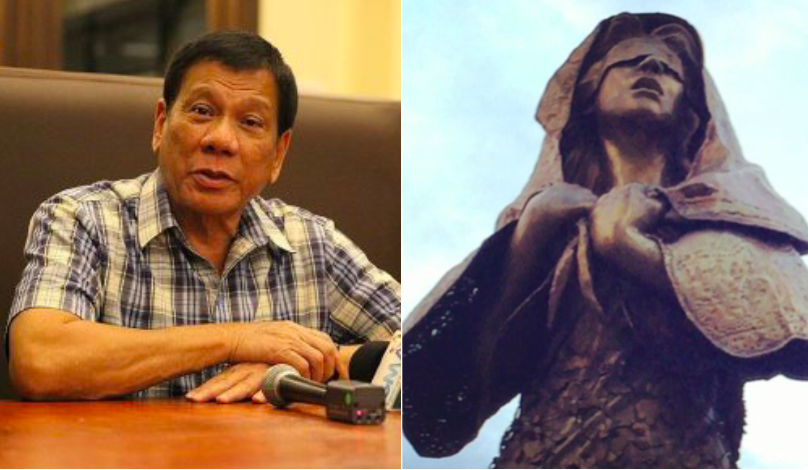
President Duterte has said he did not have any hand in the removal of the statue of a comfort woman in Manila — but hinted that he was glad it had been removed.
As we reported on Saturday (April 28), the Department of Public Works and Highways tore down the bronze statue, reportedly as part of routine drainage work.
When the seven-foot tall monument was installed last December, it drew strong protests from the Japanese foreign ministry.
When asked about its removal, the president said: “Whose initiative was it? I really do not know. I don’t even know that it exists.”
Speaking in Davao City, he then said the statue on Roxas Boulevard “has created somehow a bad — you know.”
He said it would not have created such a fuss if it had been installed on private property. “If you want to place in a private property, fine. But do not use public land,” he said.
The president added that as far as he was concerned, the issue of comfort women — a euphemism for women who were forced into sexual slavery by the wartime Japanese military — had long been settled.
“The Japanese has paid early for that. The reparation started many years ago. So let us not make insults anymore. But if there is what you would call a memorial for an injustice committed at one time, it’s all right,” he said.
“But do not use — it is not the policy of government to antagonise other nations. But if is erected in a private property, fine. We will honour it. And the Japanese government and people would understand it that there is democracy here, freedom of expression is very important.”
He said erecting the statue in public space gave the impression that it had the blessing of the government.
“It’s painful to always remind… and you start to imagine how they were treated badly. But Japan has apologised to the Filipinos. And they have certainly made much more than… in terms of reparation,” he added.
Some 1,000 Filipinos were forced to serve as comfort women during the 1941 to 1945 Japanese occupation.
